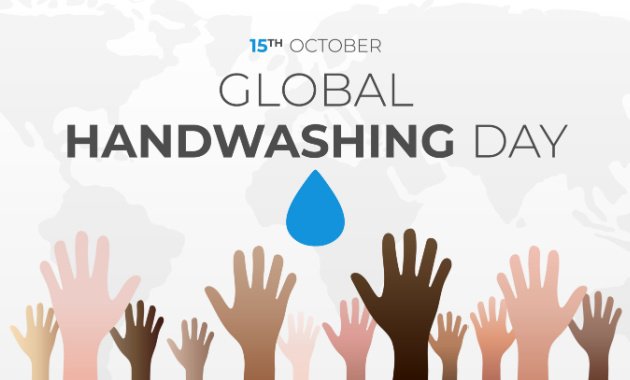
Prior to the onset of COVID-19, perhaps we had underestimated the power of handwashing. It was during that time that we truly appreciated the importance of this practice. Handwashing is a fundamental component of hand hygiene and is known to save millions of lives each year when consistently practiced[1]. It goes without saying that prioritizing hand hygiene is among the simplest and most effective ways to safeguard yourself and those around you from illnesses like food poisoning and viruses such as the flu and COVID-19.
On this Global Handwashing Day, marked by the slogan ‘Accelerate action together. SAVE LIVES– Clean Your Hands,’ the World Health Organization emphasizes cultivating a culture of safety and healthcare quality through good hand hygiene to prevent infections and antimicrobial resistance[1].
Find the perfect handwashing and sanitizing essentials of your choice.
Let’s check out 5 important steps to follow while washing your hands.
1. Get Your Hands Wet: Use warm or cold, clean running water to wet your hands. While the water temperature has minimal impact on germ removal, its cleanliness is paramount. Clean, running water efficiently removes contaminants from the skin and maintains the effectiveness of handwashing[2].
2. Soap It Up: Create a rich lather by applying soap to wet hands, ensuring thorough coverage, including the backs of your hands, spaces between your fingers, and under your nails. Adding soap to water enhances effectiveness, as the surfactants in soap aid in removing dirt and microbes from the skin. Recent research has shown that alcohol-based hand rubs are quicker and more microbiologically effective than traditional handwashing with soap and water, with less skin irritation[3]. However, ensure that the traditional handwashing method should always include thorough hand drying, as leftover moisture can potentially attract and foster the growth of germs.
3. Keep a Note of Scrubbing Time: Ensure you scrub your hands for at least 20 seconds, which can be roughly timed by singing the complete ‘Happy Birthday’ song twice, from start to finish. However, the Centre for Disease Control and Prevention states that the ideal handwashing duration is influenced by various factors, including the extent of soiling on the hands and the environment in which handwashing occurs.
We’ve discussed the importance of the duration of handwashing, but if you’re unsure about the right times to practice proper hand hygiene, keep reading.
Handwashing is essential:
-After you have used the toilet
-After you have changed a diaper
-Both before and after handling raw foods, such as meat and vegetables
-Before and after preparing as well as eating food
-After sneezing, coughing, or blowing your nose
-Before and after taking care of the sick or diseased
-Before and after tending to a cut or wound
-After coming into contact with animals, including pets, their food, and when cleaning their enclosures
4. Rinse Meticulously: Thoroughly rinse your hands under clean, running water. This rinsing action generates friction that helps lift and remove germs and microbes during handwashing while reducing the potential for skin irritation.
A Pro Tip: If frequent handwashing leads to dry or cracked skin, consider applying a moisturizing hand cream or lotion regularly.
5. Do Not Forget to Dry: Use a clean towel or an air dryer to dry your hands. Drying hands with a towel is a two-step process. First, pathogens are removed by friction as you rub your hands with the drying material. Second, moisture is drawn into the material, further removing pathogens. Paper rather than cloth towels should be used. In contrast, warm air dryers evaporate moisture and remove any surface microorganisms loosened during washing when you rub your hands together vigorously[4].
Let’s aim to follow these steps vigilantly to stay healthy.
(The article is written by Dr.Subita Alagh, Senior Executive, and reviewed by Monalisa Deka, Senior Health Content Editor)